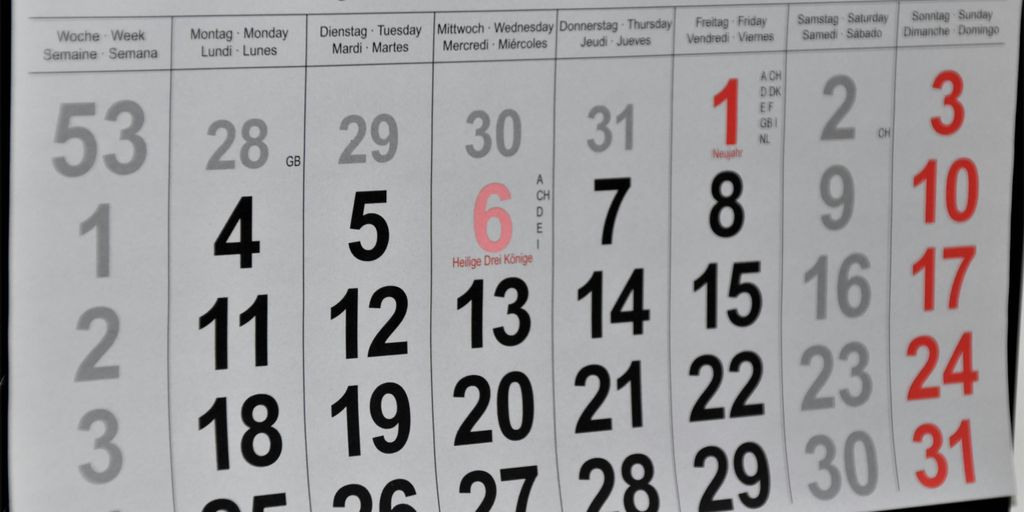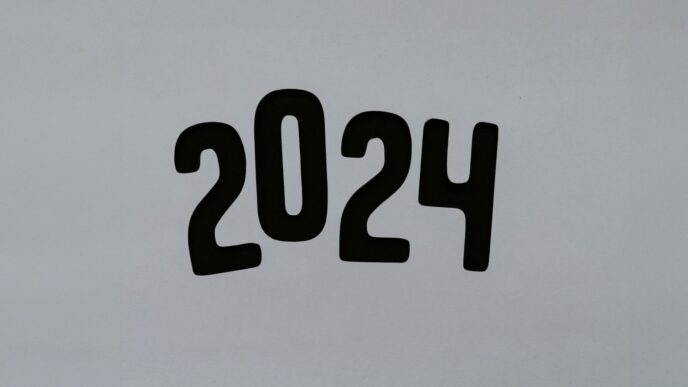Keeping your social media game strong in 2025 means having a solid plan. Without one, you’re just throwing content out there and hoping for the best, which usually doesn’t work. That’s where a good editorial calendar tool comes in. These tools help you organize everything, from what you’re posting to when and where. I’ve been looking into some of the top editorial calendar tools out there, and honestly, it’s made a big difference in how I approach my content. Let’s check out some options that could help you too.
Key Takeaways
- Sprout Social offers a unified content calendar and scheduling across multiple platforms, making it easy to see everything in one place.
- Google Calendar and Sheets are free options that allow for easy viewing of upcoming posts and collaboration through comments.
- CoSchedule is great for linking social media strategy with broader marketing efforts and offers strong workflow tools.
- Notion provides a customizable and collaborative platform using its database feature to create social media calendars.
- Loomly stands out with its Custom Channel feature via Zapier, allowing posting to almost any service and supporting multiple scheduling calendars.
Sprout Social
Sprout Social is a pretty solid choice if you’re managing social media for a business, especially if you’re in the mid-market or enterprise space. It really tries to bring everything together in one place, which is nice because, let’s be honest, juggling multiple platforms and messages can get messy fast. You get your publishing, your engagement tracking, and your reporting all in one dashboard. It’s designed to help teams work together better and actually understand what’s going on with their social media.
One of the standout features is the Smart Inbox. It pulls all your messages, comments, and mentions from different social channels into one stream. You can filter it, which is a lifesaver when you’ve got a lot coming in. They also have this Social CRM thing that helps you build out profiles for your audience, keeping track of past interactions and how they felt about things. This can make your replies feel a lot more personal, which is good for building relationships.
Key Features
- Smart Inbox: A central place for all your social media messages and comments.
- Social CRM: Build detailed customer profiles to personalize interactions.
- Advanced Analytics & Reports: Offers pre-built and custom reports for performance, engagement, and even competitor analysis.
- ViralPost® & Optimal Send Times: Uses data to figure out the best times to post for maximum reach.
- SproutLink: A tool to create custom landing pages for links in your bio, especially useful for Instagram.
Performance Tracking
Sprout Social also makes it easier to see how your content is actually doing. You can check out reports that show which posts are hitting the mark and which ones are falling flat. For example, you might find out that your behind-the-scenes videos are doing way better than product photos on Instagram, or that engagement on LinkedIn dips on Fridays. This kind of info helps you figure out what to keep doing and what to change. They have reports for overall profile performance, individual posts, and even tags you can add to categorize content, like ‘campaign’ or ‘product’. This helps you understand what’s working across different networks, like getting more clicks on Instagram or shares on LinkedIn. It’s pretty helpful for figuring out your strategy, especially since platforms like Facebook are so important for purchases.
Collaboration and Workflow
For teams, Sprout Social has features like task assignments within the Smart Inbox, which helps coordinate who’s handling what. They also have approval workflows, though some users mention they could be more detailed. The platform aims to streamline how teams publish content, manage approvals, and keep track of campaign timelines. It’s built for teams that need to manage a lot of content and conversations across different regions, making social media management more efficient. While it can get pricey as your team grows or if you need their more advanced features like social listening, it’s a strong contender for businesses serious about their social media presence.
Google Calendar and Sheets

When you’re just starting out or working with a tight budget, Google Calendar and Sheets can be surprisingly effective for managing your social media content. They’re free, which is a big plus, and most people are already familiar with how they work. You can easily set up a shared calendar to see what’s coming up, and Sheets is great for listing out post details, captions, and even tracking basic performance metrics.
Planning and Organization
Think of Google Calendar as your visual roadmap. You can color-code different platforms or content types, making it simple to see your schedule at a glance. For example, you might use blue for Facebook posts, green for Instagram, and yellow for Twitter. Sheets, on the other hand, acts as your detailed content inventory. You can create columns for:
- Date and Time
- Platform
- Caption
- Visual Asset Link
- Status (e.g., Draft, Approved, Scheduled)
- Notes
This setup helps keep everything organized and prevents last-minute scrambling. It’s a straightforward way to keep your content plan visible and accessible to your team.
Collaboration Features
While not as feature-rich as dedicated tools, Google Calendar and Sheets do offer collaboration options. You can share your calendar with team members, allowing them to view or even edit events. In Google Sheets, you can leave comments on specific cells to provide feedback on captions or suggest changes to visuals. This makes it possible to get input from others without needing a fancy platform. It’s a good starting point for teams that need to coordinate their efforts, much like how Virgin Galactic coordinates its space missions.
Limitations
It’s important to be realistic about what these tools can do. They lack the advanced analytics, automated scheduling, and content approval workflows found in more specialized software. If your team is large, your posting schedule is complex, or you need to integrate with other marketing tools, you might find yourself outgrowing this setup fairly quickly. However, for basic planning and team visibility, they’re a solid, budget-friendly option.
CoSchedule
CoSchedule really shines when your social media plan needs to connect with bigger marketing projects. It’s not just about scheduling posts; it’s a central spot for planning that makes complicated work feel more organized. If your brand puts a lot of effort into blogs, campaigns, and creating content over several steps, CoSchedule gives you the structure to keep everything on track.
Unified Marketing Calendar
This tool lets you see and manage all your content, from blog posts and email campaigns to social media updates, in one place. It’s a drag-and-drop calendar, so you can easily arrange things and make sure you’re posting consistently.
AI Social Assistant (Mia)
CoSchedule has an AI helper named Mia. You can train Mia to write in your brand’s style, helping you come up with content ideas and social media messages. There’s also a library of AI prompts to give you inspiration and make things quicker.
ReQueue
This feature helps fill in any gaps in your posting schedule by automatically sharing your best-performing posts again. It keeps your social feeds active without you having to do much work.
Social Templates
With social templates, you can create and reuse specific posting plans for things like campaigns, product launches, or regular events. This helps make sure your message is consistent across all your channels. It’s a great way to keep your social media aligned with your larger marketing goals.
While CoSchedule offers a lot, be aware that it can take some time to get used to all its features, and the price might be a bit higher than tools that only focus on social media. Also, if your team is growing rapidly, you might find the limit on social accounts a bit restrictive. However, for teams that need a solid plan for their content and social media, CoSchedule is a strong contender. You can check out how to use key social media analytics to improve your marketing efforts here.
Notion
Notion is a really flexible tool that started out as a note-taking app but has grown into something much more. For content teams, it’s become a go-to for building custom editorial calendars. Because it’s so customizable, you can really make it fit your specific workflow, which is pretty neat.
Building Your Calendar
Notion uses a database system, and this is where the magic happens for your content planning. You can set up different views of your data – think of it like looking at your content calendar from various angles. You can have a calendar view, a board view (like Trello), a list view, or even a gallery view. This makes it easy to see what’s coming up, what’s in progress, and what’s already published. It’s a great way to keep track of everything without feeling overwhelmed. You can also add properties to your database like status, due dates, assigned team members, content type, and links to drafts. This makes it a central hub for all your content information.
Collaboration Features
Collaboration is pretty straightforward in Notion. You can tag team members on specific content pieces, leave comments, and even @mention people to get their attention. This means feedback and approvals can happen right within the calendar itself, cutting down on endless email chains. It’s a good way to keep conversations tied directly to the content they’re about. You can also share specific pages or databases with external collaborators if needed, which is handy for freelancers or clients. This makes it easy to get input from everyone involved in the content creation process.
Customization and Templates
What’s really cool about Notion is that you don’t have to start from scratch. There are tons of templates available online, many of which are specifically designed for editorial calendars. You can find templates that cover everything from blog post planning to social media schedules. Even if you find a template, you can tweak it to perfectly match how your team works. You can add or remove properties, change the layout, and connect it to other Notion pages you might be using for different projects or research. This level of personalization is what makes Notion stand out for teams that need a tailored solution.
Loomly

Loomly is a pretty solid option if your team juggles a lot of social media accounts and needs to keep things organized. What really sets it apart is this "Custom Channel" thing it does through Zapier. Basically, it means you can send your content to pretty much any platform out there, not just the usual suspects like Facebook or Instagram. Think niche forums, email newsletters, or whatever else you’re using. It’s a level of flexibility that’s hard to find elsewhere, especially if you’re an agency managing different clients or brands with unique needs.
It also lets you set up multiple calendars, which is super handy. You can have one for each brand, or maybe one for a specific campaign, keeping everything separate and easy to manage. This visual calendar view is great for seeing what’s coming up and planning your content ahead of time. Plus, it has features like a hashtag manager and a link shortener built right in, which helps with engagement and tracking.
Key Features
- Custom Channel via Zapier: This lets you post to almost any service or platform by connecting Loomly with thousands of other apps. It’s a big deal for reaching audiences on less common channels.
- Multiple Scheduling Calendars: You can manage separate calendars for different brands, teams, or campaigns, each with its own settings and social profiles.
- Direct Publishing: Schedule and automatically post content to a wide range of popular platforms like Facebook, Instagram, X, LinkedIn, Pinterest, Google Business Profile, and even TikTok and YouTube.
- Hashtag Manager & Link Shortener: Helps you organize hashtags, track link performance, and generally make your posts work better.
- Analytics & Reporting: Get basic insights into how your posts are doing and export reports to see performance across your channels.
Pros
- The Custom Channel feature is a real game-changer for flexibility.
- Having separate, independent calendars makes managing different brands or campaigns much easier.
- Pricing is pretty clear, and they even offer discounts for nonprofits. No weird limits on the platforms you can use.
Cons
- The price can jump up quite a bit between different plans, and adding more users or accounts often means upgrading.
- Compared to some bigger, enterprise-focused tools, the analytics and automation features aren’t quite as advanced or polished.
- Getting approvals might feel a bit clunky if you’re used to systems where you can just send a link for approval. You have to invite people directly to the platform, which isn’t always ideal for agencies working with multiple clients.
Overall, Loomly is a strong choice for teams that need that scheduling flexibility and want to collaborate easily. While it might not have the absolute deepest analytics or the most complex automation out there, its straightforward design and that unique Zapier integration make it a smart pick for creative teams and agencies handling various social media strategies. If you’re looking for a tool that’s flexible and easy to use, Loomly offers a pretty refreshing approach to managing your social media. You can even use it to plan out your video content creation, similar to how tools like Video Motion Pro help with business videos.
Wrapping It Up: Your Path to Content Clarity
So, picking the right editorial calendar tool really comes down to what your team needs. Whether you’re a solo creator or part of a big group, having a system to plan and track your content makes a huge difference. It stops those last-minute panics and helps you put out stuff that actually works. Think about what features matter most to you – like easy sharing with your team, seeing how your posts do, or just keeping everything in one spot. By choosing a tool that fits your workflow, you’ll save time, stay organized, and make your content efforts way more effective. It’s all about making your content planning less of a headache and more of a success story.
Frequently Asked Questions
What exactly is a social media content calendar?
A social media calendar is like a roadmap for your posts. It’s a plan that shows what you’ll share on social media, when you’ll share it, and on which platforms. It helps you stay organized and consistent, making sure you don’t miss any important dates or campaigns.
How does a social media calendar save time?
Using a calendar saves you tons of time. Instead of figuring out what to post each day, you can plan ahead. This gives you more time to create awesome content and think about bigger ideas for your social media.
How do these tools help teams work together?
A good calendar helps your team work together smoothly. Everyone can see what’s planned, leave comments, and approve posts. This makes sure everyone is on the same page and that your brand’s message stays strong.
How do I make my own social media calendar?
You can create one by deciding what information you need for each post, like the text, pictures, and when to post it. Then, set up a spreadsheet or use a tool with columns for this info. Linking your social accounts to the tool makes scheduling easy.
Which social media calendar tool is the best one to use?
The best tool depends on your needs! Think about how big your team is, how much money you can spend, how often you post, and what special features you want, like approval steps or detailed reports. Simple tools like Google Calendar and Sheets work for some, while others need more advanced options.
Can I track how my posts are performing with these tools?
Yes, many tools let you see how well your posts are doing. This helps you understand what your audience likes, so you can create more of that kind of content in the future and make your social media efforts even better.














